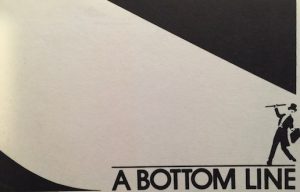You get the behaviors that you reward. A truism of management.
A quick glance at my resume would persuade most people that I’m book smart. I got rewarded for doing things that schools find easy to reward; taking tests, making the teacher look good, saying clever things (at the appropriate time and place). So I continued to do those things.
There’s an implicit (and unexamined) assumption that the things that get rewarded correlate with underlying knowledge and skills in a broader way. Doing well on the tests was taken as a marker that you were putting in the necessary work employing (and developing) the more general learning and study skills that would stand you in good stead later on. Not necessarily the case. I got a lot of things on raw horsepower rather than on good work habits.
Other elements of the surrounding environment are meant to provide guard rails. Study groups, working with fellow students on problem sets, socializing with the group who had ways to police those who varied too far from the norms. For a variety of reasons that don’t bear on this tale, those other elements didn’t apply to my circumstances. I wasn’t part of the “classes†that took place outside of the classroom. I was in front of a pack that I didn’t know existed.
For a long time, I found myself in settings where I could prosper operating inside of systems that I couldn’t see. I would hit speed bumps that I attributed to other people being stupid or to me not being smart enough to outthink the problem. I was glib enough to talk my way out of most of the problems I found my way into. I wasn’t insightful enough to see how many of those problems were of my own creation.
I started building a theory built around stupid people and how to avoid them. There is enough actual stupidity in the world to make this a dangerously seductive theory. Fortunately, as a scientist at heart, I was committed to following the evidence. Everyone else couldn’t be consistently that stupid. It wasn’t stupid people, it was me being people stupid.
There’s a longer version of the quest to follow this line of thought. For now, it’s enough to note that looking inward was the essential step. For all that I was a quick study in knowledge intensive settings, I was slow to grasp how to navigate this terrain. The tests weren’t something I could power my way through. Not alone. I had work to do on learning to balance my head with my heart. Complicating that was an additional factor; attention deficit disorder. We can save the discussion of whether ADD is over diagnosed or not really a disorder. What was important to me was learning that there were things others found easy that I found nearly impossible. Raw IQ points and a quick wit were not the answer to every problem.
I didn’t discover any of this until well into my career. Raw IQ points and a quick wit can take you a long ways. Just not all the way. I’m still working to develop skills and compensating techniques to deal with the limitations of my brain.
The essential step to dealing with any problem effectively is to be able to name it.
